#Tomonori Kogawa
Explore tagged Tumblr posts
Text

Hiroyuki Kitazume vs Kaneko
Yoshiaki Kawajiri vs Kaneko


Tomonori Kogawa vs Kaneko
Comparison of Kaneko's art style to different artists. Interestingly, Kitazume was an understudy of Kogawa/Studio bebow.
I could see why Kaneko would stick to Kitazume's style since he did the original artwork for OG megaten novels. Personally it's interesting to see that Kitazume also goes for the doll-ish 3d rendering when he moved to digital, like Kaneko. I guess that's what happens since their influences are probably Kogawa

idk maybe it's just me or late 80s/90s art style is going extinct. Sure there's a lot of attempt to emulate it, but for some reason I guess it can't recreate the gritty feelings of it.
It might be because the sterile feel of digital pen brush, digital photography (I won't blame this one imo), or the character designs being more of "what modern zoomers thinks 80s/90s is like", or going for the neon vaporwave color choice instead of the washed out color choices
doesn't help that the nineties had more diverse art style compared to other era. That's just sad
39 notes
·
View notes
Text

Drew some Ideon
イデオン バッフ・クラン
#space runaway ideon#ideon#buff clan#traditional#sketchbook#sketchbook scan#my art#chrisart#illustration#copic markers#tomonori kogawa#80s anime#mecha#retro anime
24 notes
·
View notes
Text
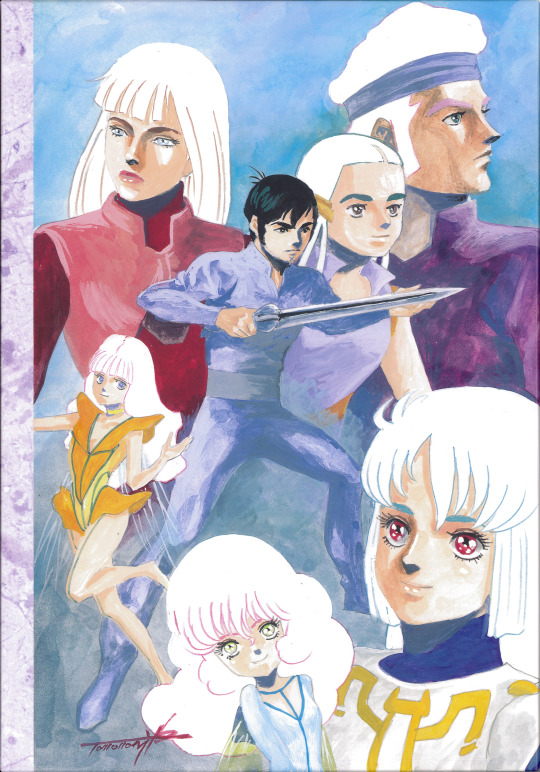
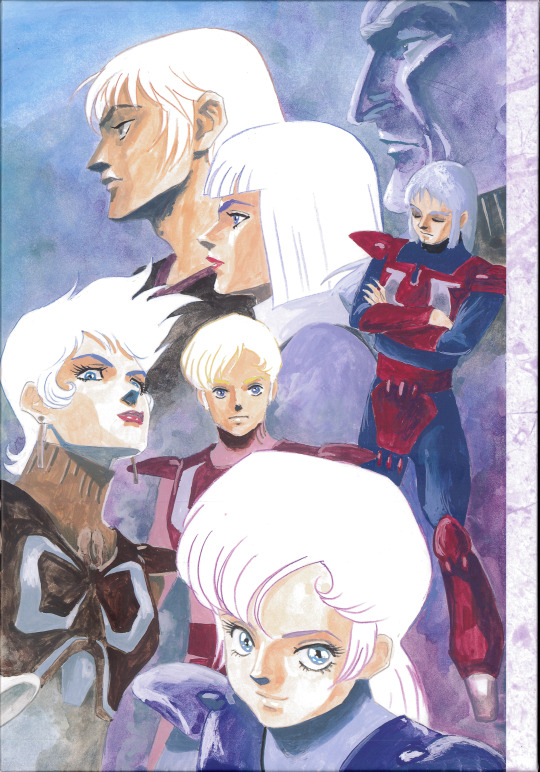

Aura Battler Dunbine BD-BOX artwork by Tomonori Kogawa
119 notes
·
View notes
Text

Love this illustration Tomonori Kogawa did of all the Buff Clan women, even tho I honestly can’t remember who half of them are
#space runaway ideon#ideon#Tomonori Kogawa#80s#like who is that blonde bitch all the way at the top…
7 notes
·
View notes
Photo
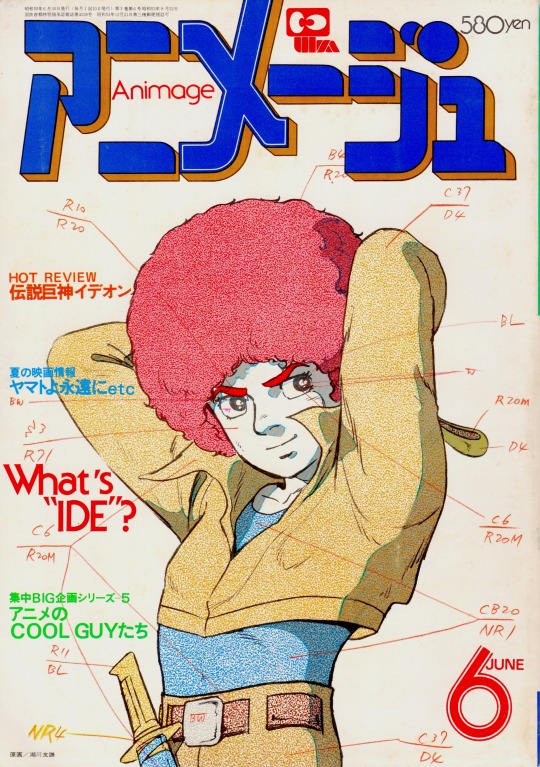
アニメージュ Vol.24 1980年6月号 伝説巨神イデオン 表紙:「伝説巨神イデオン」原画=湖川友謙、レイアウト=水野石文
#アニメージュ Vol.24 1980年6月号#animage#アニメージュ#伝説巨神イデオン#space runaway ideon#tomonori kogawa#湖川友謙#ishibumi mizuno#水野石文#anamon#古本屋あなもん#あなもん#book cover
123 notes
·
View notes
Photo
















Space Runaway Ideon: Be Invoked (1982) dir. Tomonori Kogawa for Yoshiyuki Tomino
#space runaway ideon#space runaway ideon: be invoked#ideon: be invoked#ideon#yoshiyuki tomino#tomonori kogawa#cinematography#screengrabs 2022#blood tw
90 notes
·
View notes
Text

How to make modern era Kaneko rendering
I use user-made CSP tools listed here :
- Lineart -> https://assets.clip-studio.com/en-us/detail?id=2060489 (Can use the brush used for coloring too. As long it's a textured pencil with high sensitivity. It'll works)
- Coloring -> https://assets.clip-studio.com/en-us/detail?id=1761353 - Blend -> https://assets.clip-studio.com/en-us/detail?id=1391024
- Scan Dot Effect -> https://assets.clip-studio.com/en-us/detail?id=1687175
- Color Filter -> https://assets.clip-studio.com/en-us/detail?id=1732272 (Set at clip layer > Difference)
Rendering tutorial below :
1. Prepare line art with rough textured pen. I used a pencil tool
2. Color in base. Idk I think Kaneko often starts from dark->light, but I too used with light->dark coloring.
3.) If you're coloring it light->dark like me. Slowly go from base color, to secondary, and put the darkest color on last. I use the pencil tool on my previous post
4.) blend the shading with watercolor tool. Be careful to not overblend it'll look glossy. Pull and push the color
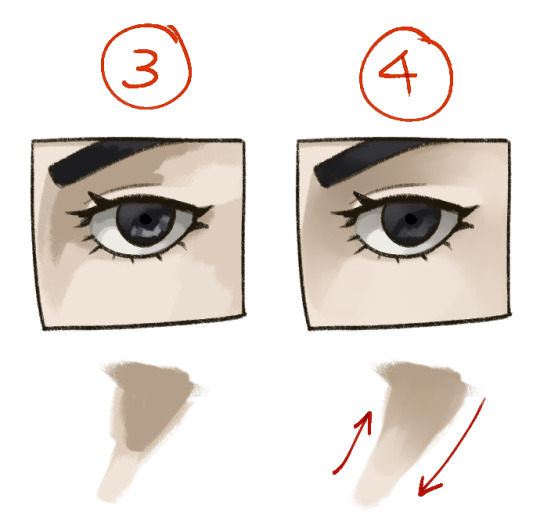
5.) at this point, you might want to process the line art a bit.
Idk what tool Kaneko used for the lineart in this era, but it's super textured and "fades" when you put low pressure, like a real pencil.
Interestingly enough, his modern art style would ditch the textured pen(?)

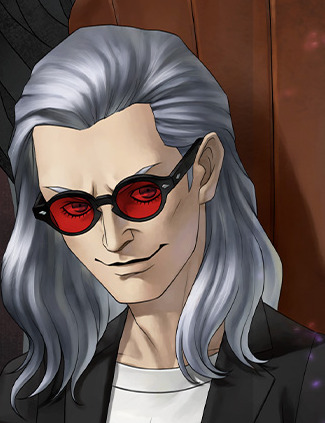
6.) For the eye highlights, I used a white layer with "add" layer effect.


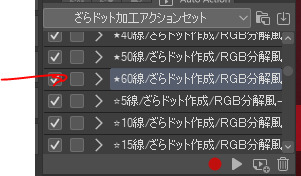
7.) Optional, but if you want the classic scan effect and color for parody/april fools project. You can use this filter from the user-made CSP filter list I posted above, set the folder to clipping layer -> difference + 50% opacity for the folder.
If you want to even add more, you can add the dot filter processing. For this pic I used 60 size dot because it's a small sized close up of an eye. For a gigantic pic you can use 10 or 15... Whatever you want
---
The result will look something like this. I think my lineart's too thick and I over-rendered too much on its clothes. If you learn from my failure, I think you can reproduce a parody of Kaneko's artwork, either for april fools purpose or maybe you wanna reverse engineer it into your own art style
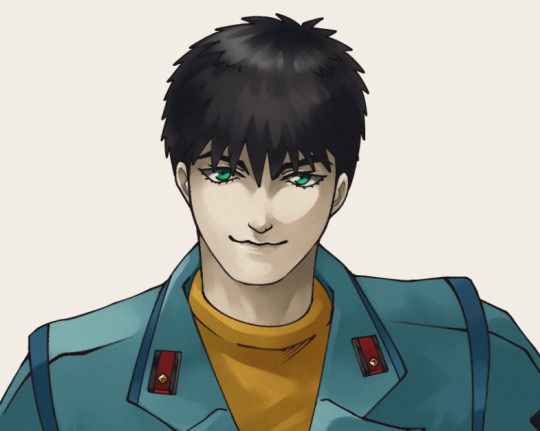

If you're wondering why Kaneko's art style had a distinct porcelain doll look, you might want to refer to this post of Kaneko and possible inspiration from 80s animator Tomonori Kogawa
290 notes
·
View notes
Photo

Cosmo Yuki from Space Runaway Ideon by Tomonori Kogawa / Animage magazine (06/1980)
156 notes
·
View notes
Text
Notes on Tomonori Kogawa’s Influence

I’m not an expert on Kogawa and this post isn’t intended to specify exactly how he influenced the anime industry, but seeing that many people don’t even know who he is, and some of those who know misunderstand his contributions to anime, I thought I might try to shed some light on this topic.
Indeed, Kogawa’s influence is trickier to describe than, say, Kanada or Obari. His influence doesn’t exactly materialize in an obvious animation style or effects. However, I think that taking a look at the anime landscape during his time should help a lot in seeing how he indeed made important contributions to the development of anime, TV anime before anything.
Going back as far as 1963 and looking at Astro Boy, one could get a good idea of how anime on TV would look like for roughly the next 10 years. Astro Boy was as basic as it gets, sometimes an animation just in name, as it lacked any real sense of smooth motion or sophisticated drawings whatsoever. Now, animators working on Astro Boy didn’t suddenly unlearn animation, the type of project Astro Boy was, as the first weekly TV anime and in turn with a tight schedule, just didn’t allow for doing anything more than the basics of the basics. It’s a philosophy that carries on to this day in TV anime (and to an extent in movies too): getting it out comes first, anything else comes second. If you want to understand what I mean look no further than the short movie Mushi Pro produced in 1962, just a year before producing Astro Boy, to test limited animation, called Aru Machi Kado no Monogatari or “A Story of a Street Corner”. It’s of course not on the same level as Toei’s movies for example, but worlds apart from Astro Boy. And because of that some go as far as to say that Osamu Tezuka butchered the promising japanese animated movies industry led by Toei, which is, in a sense, sadly true.
An example from Aru Machi Kado no Monogatari.
And all the TV animes that followed did the same until this became the standard for anime in general, both televised and theatrical. The thing is, in an industry that relies on learning by doing, the new generations that grew in such an environment might actually not know how to “properly” animate or draw, and that’s what happened to Kogawa when his properly drawn faces were “corrected” to the standard of TV anime at the time. Kogawa didn’t need to learn animating the anime way, since he was an arts graduate before starting to work on anime, so he most definitely saw the shortcomings in the way anime was drawn.
Kogawa himself really emphasizes the importance of studying animating and in particular illustrating. Not necessarily in the sense of a university degree, but more like observing the surrounding world with a scrutinizing eye and always rethinking the way you draw instead of repeating the poor drawings you have been making. And although he may have deviated from this approach later on, I guess he was almost obsessed with accurate illustrating to the point where he wanted to dissect a human body in his 20s’.
What is the result of this mentality, then? How are Kogawa’s works any different than his counterparts at the time? This, too, is sometimes hard to pinpoint, but one of the most clear distinctions in his style are the way mouths and jaws work. This might sound obvious, but when you speak the whole jaw moves, not just your lips, and this is rarely reflected even in modern anime. Kogawa’s animes are different, and you can notice that in every scene. It’s such a small detail yet a very important one in convincing the viewer of the three dimensionality of the characters, and one that injects vividness into the scene somehow. Another important trademark of his are the shots where the character is looking up in a somewhat dramatic way. You must have seen it at least once if you ever watched a Tomino show from 1980 to 1984 since he always worked with Kogawa during that period (except on Gundam). His great attention to perspective and accurate anatomical drawings brings a level of realism other animes, either from back then or now, struggle to reach. It’s not that no one knew how to draw like that before, maybe everyone did, but it was very rarely if ever brought to TV anime, and most definitely not in the consistency Kogawa had.
Pay attention to jaws and mouths’ movements here.
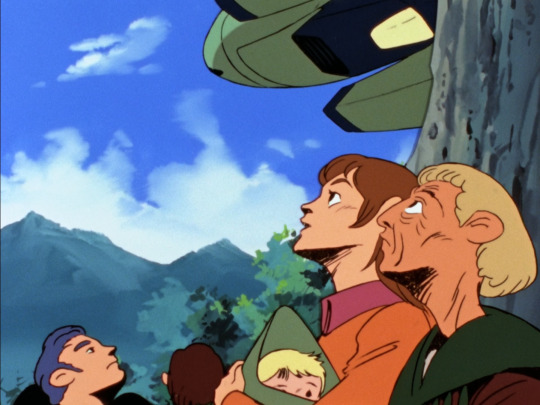

Anatomy and perspective very on point. From Dunbine #10, AD: Tomonori Kogawa.
So is it correct to say that Kogawa’s influence was bringing this level of character animation to TV anime? I don’t know for sure, but it definitely was one of the main reasons why most Tomino shows of the era, Ideon, Xabungle, L-Gaim and Dunbine are classics that are still a joy to watch even today. Kogawa started to focus more on gags and funny animation starting presumably with Xabungle, and his special attention to character animation serves as a strong basis for the punchy somewhat comical character interactions, and this is very obvious in L-Gaim and Xabungle.
One more thing worth mentioning about Kogawa is his status as a teacher for younger animators around him, which stems from his personality. He once had to heavily correct one animator’s cut, who then, upon watching the final version on TV in the studio, said “Huh, not as bad as I thought.” Kogawa left his cut uncorrected next time to teach him a lesson. He did the same to Ichiro Itano in Ideon: Be Invoked climax, where he purposefully left the poor Solo ship Itano drew uncorrected. He didn’t only think of “delivering a good product”, he wanted to make a meaningful change in the industry, and probably the people who directly worked under Kogawa and their works in and of themselves best embody the mark he left on anime.
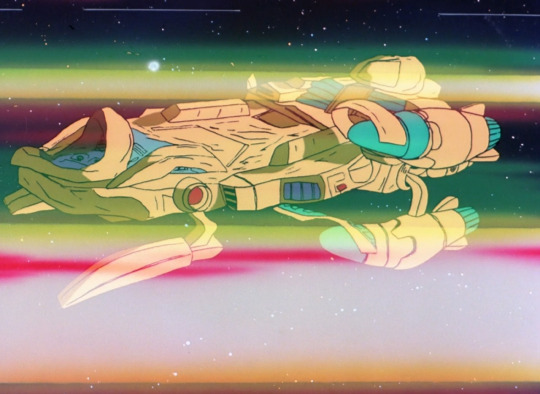
That Solo Ship.
Links:
If you want to learn more about Kogawa’s mentality as a creator go read this interview, it’s really interesting.
As for the creators Kogawa influenced and his own studio, Bebow, I’d recommend this blog post.
Kogawa drawing Dunbine.
23 notes
·
View notes
Photo

76 notes
·
View notes
Photo

16 notes
·
View notes



